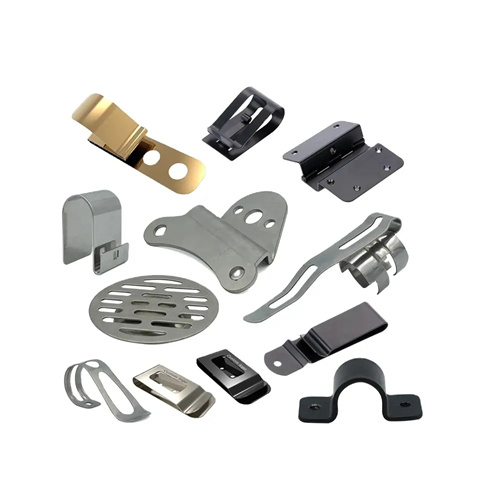Aluminum alloy plates for railway freight cars
Aluminum alloy sheet for railway freight cars is a specialized material used in the manufacture of components such as train bodies, chassis, and sidewalls. Featuring high strength, lightweight construction, and corrosion resistance, it significantly reduces freight car weight and improves load-carrying efficiency, playing a vital role in the modernization of railway freight transport. Its primary materials are aluminum alloys such as 5083, 6061, and 7005. 5083 alloy, with a magnesium content of 4.0%-4.9% and a manganese content of 0.4%-1.0%, offers excellent corrosion resistance and weldability, making it suitable for car bodies. 6061 alloy, with a magnesium content of 0.8%-1.2% and a silicon content of 0.4%-0.8%, offers high strength (tensile strength ≥310 MPa) and is used in load-bearing components such as chassis. 7005 alloy, with a zinc content of 3.0%-4.0% and a magnesium content of 1.0%-1.8%, offers even higher strength (tensile strength ≥380 MPa) and is suitable for heavy-duty freight cars. The thickness of the plate is usually 4-16mm, the width can reach 2500mm, the length is 12000mm, and the flatness deviation is ≤5mm/m.

The production process for aluminum alloy plates for railway freight cars requires a balance of strength, ductility, and weldability. First, high-purity aluminum ingots (above 99.7%) and alloying elements (such as magnesium, manganese, and zinc) are selected and smelted in a large melting furnace at a controlled temperature of 730-750°C. Furnace refining and online degassing are used to reduce the hydrogen content to ≤0.12ml/100gAl and the inclusion level to ≤1. The melt is then semi-continuously cast into ingots 400-600mm thick. The ingots undergo homogenization annealing (450-480°C for 5083 alloy and 520-550°C for 6061 alloy) to eliminate compositional segregation. During the hot rolling stage, the ingots are heated to 400-450°C and reduced to 10-20mm through multiple hot rolling passes, with a reduction of 15%-25% per pass. The final rolling temperature is controlled at 300-350°C. The cold rolling process varies depending on the alloy type. 5083 alloy is cold-rolled to the target thickness and then annealed (340-380°C), while 6061 alloy undergoes solution treatment (water quenching at 520-540°C) followed by artificial aging (160-180°C). Finished plates are straightened and trimmed, and then undergo tensile testing (elongation ≥ 10%), impact testing (impact energy ≥ 20J at -40°C), and corrosion testing (salt spray testing ≥ 1000 hours) to ensure quality.

In general-purpose freight trains, aluminum alloy plates offer significant lightweighting advantages. Covered and open wagon bodies utilize 5083 aluminum alloy plates with a thickness of 4-6mm, resulting in a 40%-50% weight reduction compared to traditional steel structures. A railway company’s 25-ton axle-load freight cars employ this material, increasing load capacity by 8% and reducing energy consumption by 15%. Container flat cars utilize 6mm-thick 5083 aluminum alloy plates for their side and end walls. These plates are welded together into large panels, reducing the number of connecting parts and extending the maintenance cycle of a container carrier’s flat cars to eight years. In bulk cargo trains, hopper cars utilize 8-10mm-thick 6061 aluminum alloy plates for their side panels, offering both strength and corrosion resistance, resisting the wear and tear of cargoes like coal and ore, and resulting in a service life exceeding 15 years.

Specialized railway freight cars have unique performance requirements for aluminum alloy plates. Tank trucks (for transporting liquids and gases) utilize 5083 aluminum alloy plates with a thickness of 8-12mm , which must pass rigorous airtightness testing (no leakage at a pressure of ≥ 0.6MPa ). A chemical tank truck using this material has seen a 30% improvement in safety . The underframe crossbeams of long freight trucks (for transporting large equipment) utilize 12-16mm thick 7005 aluminum alloy plates. Their high strength allows them to withstand concentrated loads. The underframe of a transformer transport truck for a heavy machinery plant has a load capacity of up to 300 tons. Refrigerated freight trains utilize a composite insulation layer of 5083 aluminum alloy plates. Its excellent low thermal conductivity (thermal conductivity coefficient ≤ 117W/(m・K) ) reduces cooling loss, resulting in a 20% reduction in energy consumption for a cold chain logistics company’s refrigerated trucks.

As rail freight transport evolves towards high-speed, heavy-load, and environmentally friendly transportation, the performance of aluminum alloy plates used in railway freight cars continues to improve. Manufacturers have developed 7050 aluminum alloy plate (tensile strength ≥510 MPa) for heavy-duty freight cars with a 30-ton axle load, reducing weight while increasing load capacity by 20%. For cold regions, low-temperature toughness aluminum alloy plate with an impact energy ≥30J at -60°C has been developed, suitable for the harsh cold conditions of Northeast and Northwest China. In terms of process innovation, large-scale ingot rolling technology is being used to produce aluminum alloy plates with widths exceeding 3000mm, reducing weld seams on the car body and increasing production efficiency by 25% at one freight car manufacturer. With the advancement of the Belt and Road Initiative and the growth of railway freight volume, market demand for aluminum alloy plates used in railway freight cars will continue to expand, driving the development of materials with higher strength and longer lifespans.
